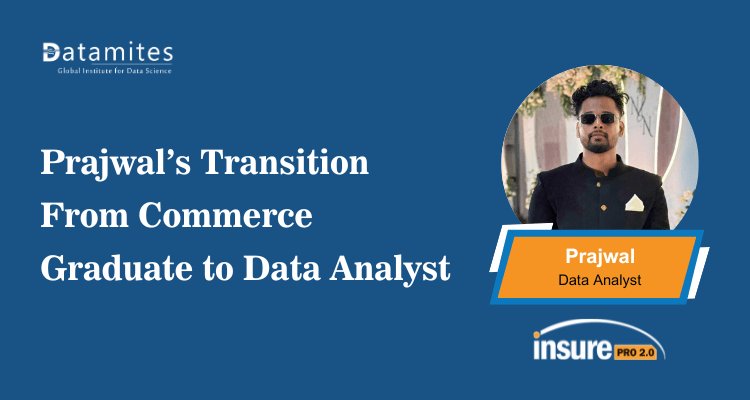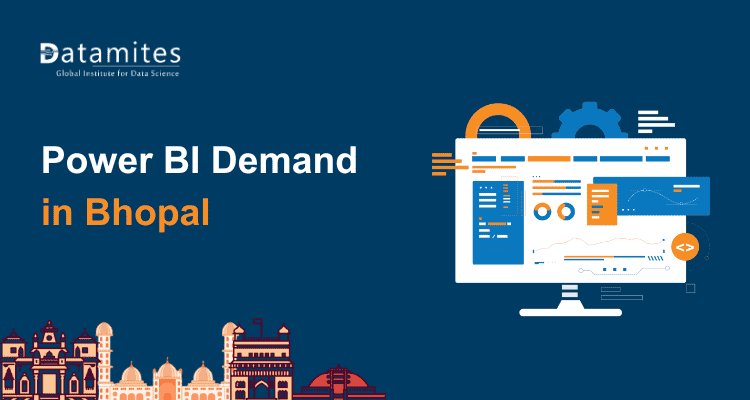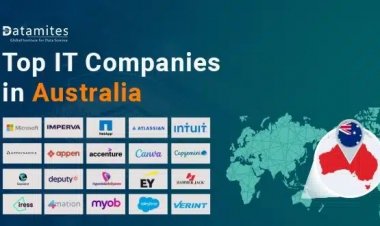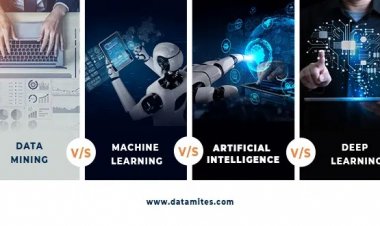Top 5 Emerging Trends in Data Analytics for 2025
Discover the top 5 emerging trends in data analytics for 2025, including AI-enhanced predictive analytics, real-time data insights, and next-gen data visualization. Learn how businesses can future-proof their data strategies in an evolving digital world.
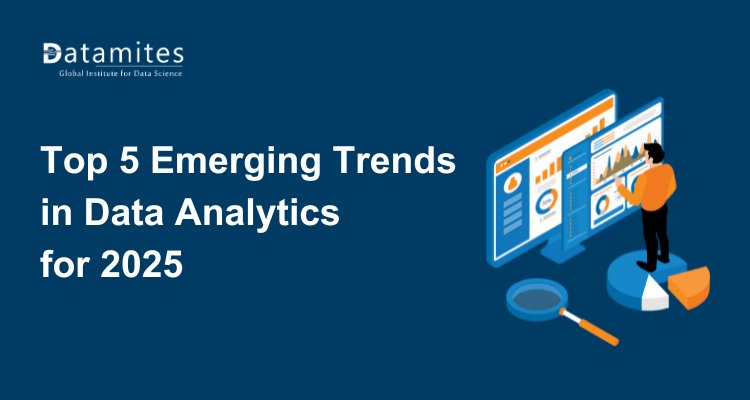
In today’s data-driven economy, data analytics continues to evolve at a remarkable pace. As we step into 2025, the demand for advanced data solutions across industries is surging—fueled by innovations in artificial intelligence, cloud computing, and the growing need for real-time insights. From healthcare data analytics to predictive analytics in finance, organizations are leveraging data to drive smarter decisions, optimize operations, and deliver personalized customer experiences.
Top Trends in Data Analytics:
As we approach 2025, the landscape of data analytics is evolving at an unprecedented pace, driven by advancements in AI, cloud computing, and real-time processing. Understanding these emerging trends is crucial for organizations aiming to leverage data for strategic advantage.
1. AI-Enhanced Predictive Analytics
The integration of AI in data analytics is rapidly emerging as a transformative force, reshaping how organizations analyze and leverage data for strategic decision-making. By combining artificial intelligence with predictive analytics, businesses can forecast future events with greater accuracy and nuance. AI algorithms automatically detect patterns, learn from historical data, and adjust forecasts in real-time.
- AI-powered predictive analytics is revolutionizing areas like supply chain optimization, customer churn prediction, and fraud detection.
- Healthcare data analytics benefits from AI’s ability to anticipate patient outcomes, streamline diagnostics, and tailor treatment plans.
As AI becomes more sophisticated, expect AI-enhanced analytics to drive deeper insights with minimal human intervention.
2. Evolution of Cloud Analytics
Cloud technology is no longer optional—it’s a necessity. The evolution of cloud analytics is enabling companies to scale data processing capabilities without heavy infrastructure costs. In 2025, more data analytics companies are shifting to cloud-native platforms for improved agility, security, and integration.
- Cloud-based tools like Google BigQuery, Snowflake, and AWS Redshift are powering large-scale analytics for businesses across domains.
- Seamless collaboration and centralized data storage are making cloud analytics ideal for hybrid work environments.
As more organizations embrace multi-cloud and hybrid data environments, expect increased demand for cloud-agnostic data analytics tools.
3. Next-Gen Data Visualization
Data storytelling is becoming just as important as data analysis itself. Next-gen data visualization tools are transforming static charts into dynamic dashboards that engage and inform.
- Tools like Tableau, Power BI, and Looker are evolving to support interactive, AI-assisted visualizations.
- Visualization now goes beyond charts—think real-time graphs, augmented reality data interfaces, and immersive dashboards.
Incorporating SQL for data analysis and Python for data analytics remains critical for building custom visualizations and automating reports.
4. Insights with Real-Time Data
Speed matters more than ever. In 2025, companies are moving from traditional batch processing to real-time data analytics for instant decision-making. Whether it's detecting anomalies in banking or responding to live customer behavior on e-commerce platforms, real-time analytics drives agility.
- Real-time insights are vital in healthcare, finance, retail, and logistics.
- Streaming technologies such as Apache Kafka, Flink, and Spark Streaming support continuous data processing.
This shift enables businesses to act on insights as they happen, improving responsiveness and customer experience.
5. Strengthening Data Privacy Measures
As data regulations become stricter, businesses must prioritize data privacy and compliance. In 2025, ethical data analytics is being shaped by advanced governance frameworks and privacy-preserving technologies.
- Frameworks like GDPR, HIPAA, and CCPA are driving organizations to implement robust consent and encryption systems.
- Technologies such as differential privacy, data masking, and secure multi-party computation are gaining traction.
By balancing data utility with privacy, organizations can build trust while still unlocking the value of their datasets.
Read the articles below:
- Top skill for Data analyst: Python, Excel, SQL
- Top Industries Hiring Data Analysts in 2025
- Data Analytics in the Age of Big Data & Machine Learning
Future-Proofing with Data: Strategies for 2025
To remain competitive, organizations must future-proof their data analytics strategies by:
- Investing in AI-powered analytics and automation tools.
- Upskilling teams in Python and SQL, essential tools for modern analytics.
- Adopting scalable cloud platforms for flexible, cost-efficient analytics.
- Prioritizing data governance and compliance frameworks.
- Leveraging data visualization tools for better storytelling and decision-making.
By integrating these strategies, companies can turn raw data into actionable intelligence—and stay ahead in the digital race.
Real-World Data Analytics Examples
Here are some compelling real-world applications of data analytics trends in 2025:
1. Healthcare: A hospital system uses AI-enhanced predictive analytics to forecast patient admission rates and optimize staff allocation. For Example:
Massachusetts General Hospital utilized predictive analytics to pinpoint high-risk patients and launch proactive intervention initiatives. This data-centric strategy led to a 22% reduction in hospital readmissions, decreased overall healthcare expenses, and significantly enhanced patient outcomes and quality of life.
2. Retail: An e-commerce brand leverages real-time analytics to adjust prices dynamically based on customer behavior and market demand.
3. Finance: Banks use Python for data analytics to identify fraud patterns in massive datasets using machine learning.
4. Manufacturing: Enterprises implement cloud analytics to monitor machinery and detect maintenance needs proactively.
Deloitte reports that manufacturers who have begun adopting initiatives related to building an industrial metaverse have seen a 12% improvement in key metrics, including sales efficiency, product quality, throughput, and labor productivity.
5. Education: Institutions apply data visualization dashboards to track student performance and personalize learning interventions. For Example:
In 2024, PricewaterhouseCoopers (PwC) implemented advanced data visualization tools, enabling clients to access real-time insights into their financial performance. This advancement significantly improved strategic decision-making, boosted profitability, and fostered stronger client relationships by delivering more transparent and data-driven advisory solutions.
These use cases demonstrate how data analytics is redefining industries and unlocking new avenues for growth and efficiency.
The future of data analytics is dynamic, intelligent, and increasingly real-time. As we look ahead to 2025, trends such as AI-powered predictive analytics, cloud-based platforms, interactive visualizations, and privacy-first analytics are setting new benchmarks for what’s possible.
Organizations that proactively adapt to these trends, invest in the right technologies, and build data-literate teams will be best positioned to thrive in a world where data is the most valuable currency. According to research by Statista, retailers leveraging AI and machine learning-driven analytics experience a 5–6% increase in sales and profit growth compared to those who do not adopt these technologies.
Refer to the articles:
- Top IT Courses in Pune
- Top IT Courses in Hyderabad
- Top IT Courses in Chennai
- Top IT Courses in Bangalore
Whether you're a data professional, a business leader, or simply curious about the digital future, now is the time to embrace the transformative power of data analytics.
Enrolling in a Data Analyst course in Bangalore and other major tech hubs like Chennai, Pune, Hyderabad, Ahmedabad, Coimbatore, Delhi, Jaipur, and Mumbai offers invaluable hands-on industry experience, strong networking opportunities, and enhanced career growth. These cities provide the ideal environment for building a successful future in data analysis and software development.
DataMites Institute is a leading provider of top-tier courses in Data Science, Python Programming, Data Analytics, Machine Learning, and AI. Designed to meet industry demands, DataMites offers a job-oriented curriculum that blends theoretical knowledge with practical experience. With live training sessions and a hands-on approach, students gain real-world expertise through real-time projects and internships, ensuring they are job-ready upon graduation.
The institute offers flexible learning options, including both online and offline modes, allowing students to choose what best suits their schedule and learning preferences. Accredited by IABAC and NASSCOM FutureSkills, DataMites ensures that all its programs adhere to global industry standards, providing students with internationally recognized certifications.
DataMites Institute provides Data Analyst courses in Chennai but also in key cities like Pune, Hyderabad, Bangalore, Ahmedabad, Jaipur, Coimbatore, Delhi, and Mumbai—ensuring flexible and convenient learning opportunities for aspiring professionals throughout India.
Whether you're a beginner or a professional looking to upgrade your skills, DataMites Institute empowers you with the tools and knowledge to excel in the competitive tech industry.

